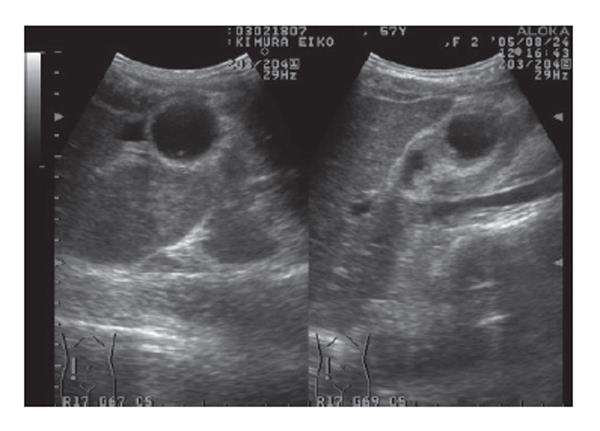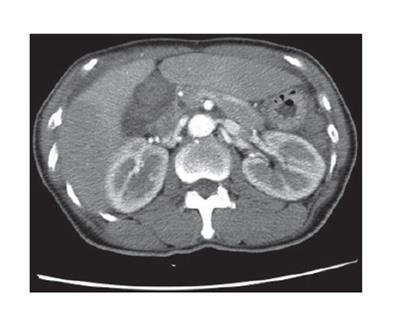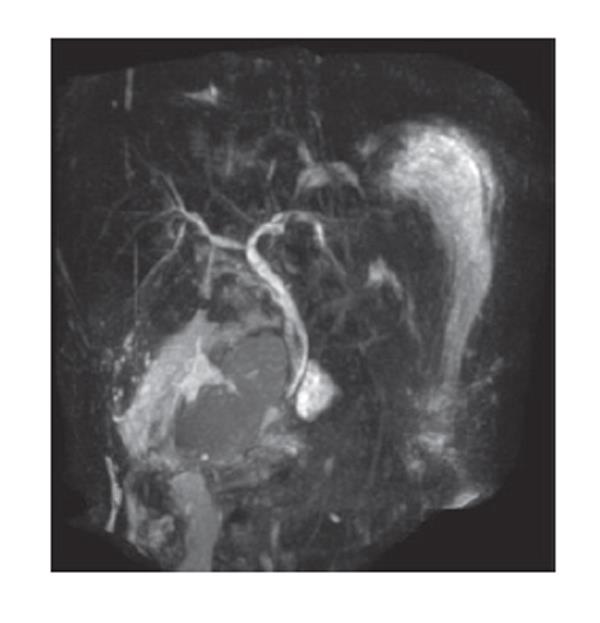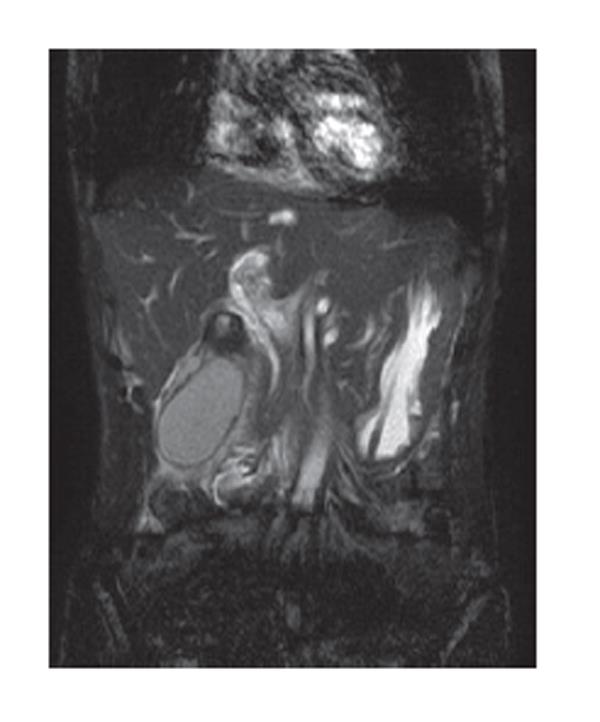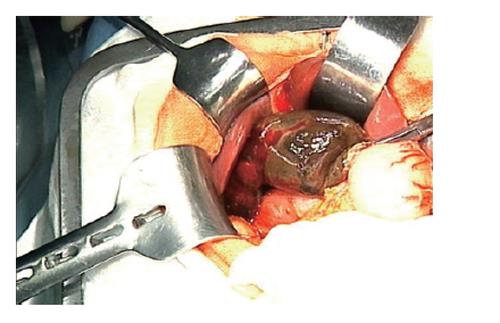Copyright
©2006 Baishideng Publishing Group Co.
World J Gastroenterol. Jul 28, 2006; 12(28): 4599-4601
Published online Jul 28, 2006. doi: 10.3748/wjg.v12.i28.4599
Published online Jul 28, 2006. doi: 10.3748/wjg.v12.i28.4599
Figure 1 Abdominal ultrasonography revealed an abnormally large floating gallbladder without gallstones, and a thickened gallbladder wall.
Figure 2 Abdominal enhanced computed tomography revealed a dilatated gallbladder, but a non-enhanced gallbladder wall.
Figure 3 MRCP demons-trated dilatation of the gall-bladder, but its image identified no gallbladder neck.
Figure 4 Coronal MRI revealed a dilatated gallbladder, and its invagination-like image identified the neck of the gallbladder.
Figure 5 At laparotomy, macroscopic findings showed a distended and gangrenous gallbladder along with a counterclockwise torsion of 360 degrees of the gallbladder mesentery.
- Citation: Matsuhashi N, Satake S, Yawata K, Asakawa E, Mizoguchi T, Kanematsu M, Kondo H, Yasuda I, Nonaka K, Tanaka C, Misao A, Ogura S. Volvulus of the gall bladder diagnosed by ultrasonography, computed tomography, coronal magnetic resonance imaging and magnetic resonance cholangio-pancreatography. World J Gastroenterol 2006; 12(28): 4599-4601
- URL: https://www.wjgnet.com/1007-9327/full/v12/i28/4599.htm
- DOI: https://dx.doi.org/10.3748/wjg.v12.i28.4599













